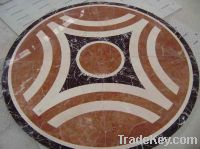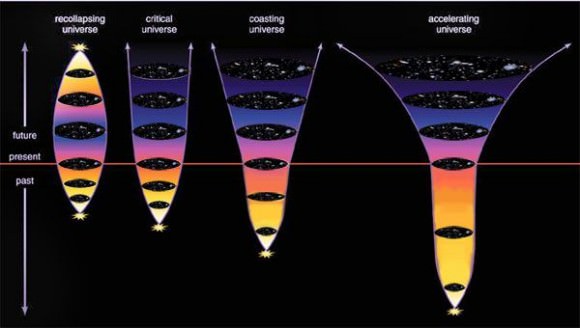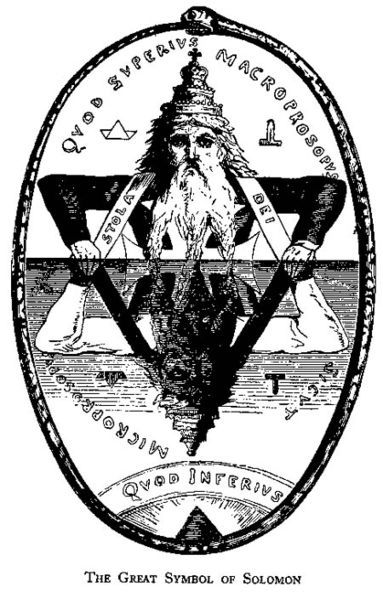Below is an article by Michael T. Klare about the upcoming Climate Summit in Paris in which my artwork is in conjunction of during the GAIA exhibition.
Why the Paris Climate Summit Will Be a Peace Conference
Averting a World of Failed States and Resource Wars
By Michael T. Klare
At the end of November, delegations from nearly 200 countries will convene in Paris for what is billed as the most important climate meeting ever held. Officially known as the 21st Conference of the Parties (COP-21) of the United Nations Framework Convention on Climate Change (the 1992 treaty that designated that phenomenon a threat to planetary health and human survival), the Paris summit will be focused on the adoption of measures that would limit global warming to less than catastrophic levels. If it fails, world temperatures in the coming decades are likely to exceed 2 degrees Celsius (3.5 degrees Fahrenheit), the maximum amount most scientists believe the Earth can endure without experiencing irreversible climate shocks, including soaring temperatures and a substantial rise in global sea levels.
A failure to cap carbon emissions guarantees another result as well, though one far less discussed. It will, in the long run, bring on not just climate shocks, but also worldwide instability, insurrection, and warfare. In this sense, COP-21 should be considered not just a climate summit but a peace conference — perhaps the most significant peace convocation in history.
To grasp why, consider the latest scientific findings on the likely impacts of global warming, especially the 2014 report of the Intergovernmental Panel on Climate Change (IPCC). When first published, that report attracted worldwide media coverage for predicting that unchecked climate change will result in severe droughts, intense storms, oppressive heat waves, recurring crop failures, and coastal flooding, all leading to widespread death and deprivation. Recent events, including a punishing drought in California and crippling heat waves in Europe and Asia, have focused more attention on just such impacts. The IPCC report, however, suggested that global warming would have devastating impacts of a social and political nature as well, including economic decline, state collapse, civil strife, mass migrations, and sooner or later resource wars.
These predictions have received far less attention, and yet the possibility of such a future should be obvious enough since human institutions, like natural systems, are vulnerable to climate change. Economies are going to suffer when key commodities — crops, timber, fish, livestock — grow scarcer, are destroyed, or fail. Societies will begin to buckle under the strain of economic decline and massive refugee flows. Armed conflict may not be the most immediate consequence of these developments, the IPCC notes, but combine the effects of climate change with already existing poverty, hunger, resource scarcity, incompetent and corrupt governance, and ethnic, religious, or national resentments, and you’re likely to end up with bitter conflicts over access to food, water, land, and other necessities of life.
The Coming of Climate Civil Wars
Such wars would not arise in a vacuum. Already existing stresses and grievances would be heightened, enflamed undoubtedly by provocative acts and the exhortations of demagogic leaders. Think of the current outbreak of violence in Israel and the Palestinian territories, touched off by clashes over access to the Temple Mount in Jerusalem (also known as the Noble Sanctuary) and the inflammatory rhetoric of assorted leaders. Combine economic and resource deprivation with such situations and you have a perfect recipe for war.
The necessities of life are already unevenly distributed across the planet. Often the divide between those with access to adequate supplies of vital resources and those lacking them coincides with long-term schisms along racial, ethnic, religious, or linguistic lines. The Israelis and Palestinians, for example, harbor deep-seated ethnic and religious hostilities but also experience vastly different possibilities when it comes to access to land and water. Add the stresses of climate change to such situations and you can naturally expect passions to boil over.
Climate change will degrade or destroy many natural systems, often already under stress, on which humans rely for their survival. Some areas that now support agriculture or animal husbandry may become uninhabitable or capable only of providing for greatly diminished populations. Under the pressure of rising temperatures and increasingly fierce droughts, the southern fringe of the Sahara desert, for example, is now being transformed from grasslands capable of sustaining nomadic herders into an empty wasteland, forcing local nomads off their ancestral lands. Many existing farmlands in Africa, Asia, and the Middle East will suffer a similar fate. Rivers that once supplied water year-round will run only sporadically or dry up altogether, again leaving populations with unpalatable choices.
As the IPCC report points out, enormous pressure will be put upon often weak state institutions to adjust to climate change and aid those in desperate need of emergency food, shelter, and other necessities. “Increased human insecurity,” the report says, “may coincide with a decline in the capacity of states to conduct effective adaptation efforts, thus creating the circumstances in which there is greater potential for violent conflict.”
A good example of this peril is provided by the outbreak of civil war in Syria and the subsequent collapse of that country in a welter of fighting and a wave of refugees of a sort that hasn’t been seen since World War II. Between 2006 and 2010, Syria experienced a devastating drought in which climate change is believed to have been a factor, turning nearly 60% of the country into desert. Crops failed and most of the country’s livestock perished, forcing millions of farmers into penury. Desperate and unable to live on their land any longer, they moved into Syria’s major cities in search of work, often facing extreme hardship as well as hostility from well-connected urban elites.
Had Syrian autocrat Bashar al-Assad responded with an emergency program of jobs and housing for those displaced, perhaps conflict could have been averted. Instead, he cut food and fuel subsidies, adding to the misery of the migrants and fanning the flames of revolt. In the view of several prominent scholars, “the rapidly growing urban peripheries of Syria, marked by illegal settlements, overcrowding, poor infrastructure, unemployment, and crime, were neglected by the Assad government and became the heart of the developing unrest.”
A similar picture has unfolded in the Sahel region of Africa, the southern fringe of the Sahara, where severe drought has combined with habitat decline and government neglect to provoke armed violence. The area has faced many such periods in the past, but now, thanks to climate change, there is less time between the droughts. “Instead of 10 years apart, they became five years apart, and now only a couple years apart,” observes Robert Piper, the United Nations regional humanitarian coordinator for the Sahel. “And that, in turn, is putting enormous stresses on what is already an incredibly fragile environment and a highly vulnerable population.”
In Mali, one of several nations straddling this region, the nomadic Tuaregs have been particularly hard hit, as the grasslands they rely on to feed their cattle are turning into desert. A Berber-speaking Muslim population, the Tuaregs have long faced hostility from the central government in Bamako, once controlled by the French and now by black Africans of Christian or animist faith. With their traditional livelihoods in peril and little assistance forthcoming from the capital, the Tuaregs revolted in January 2012, capturing half of Mali before being driven back into the Sahara by French and other foreign forces (with U.S. logistical and intelligence support).
Consider the events in Syria and Mali previews of what is likely to come later in this century on a far larger scale. As climate change intensifies, bringing not just desertification but rising sea levels in low-lying coastal areas and increasingly devastating heat waves in regions that are already hot, ever more parts of the planet will be rendered less habitable, pushing millions of people into desperate flight.
While the strongest and wealthiest governments, especially in more temperate regions, will be better able to cope with these stresses, expect to see the number of failed states grow dramatically, leading to violence and open warfare over what food, arable land, and shelter remains. In other words, imagine significant parts of the planet in the kind of state that Libya, Syria, and Yemen are in today. Some people will stay and fight to survive; others will migrate, almost assuredly encountering a far more violent version of the hostility we already see toward immigrants and refugees in the lands they head for. The result, inevitably, will be a global epidemic of resource civil wars and resource violence of every sort.
Water Wars
Most of these conflicts will be of an internal, civil character: clan against clan, tribe against tribe, sect against sect. On a climate-changed planet, however, don’t rule out struggles among nations for diminished vital resources — especially access to water. It’s already clear that climate change will reduce the supply of water in many tropical and subtropical regions, jeopardizing the continued pursuit of agriculture, the health and functioning of major cities, and possibly the very sinews of society.
The risk of “water wars” will arise when two or more countries depend on the same key water source — the Nile, the Jordan, the Euphrates, the Indus, the Mekong, or other trans-boundary river systems — and one or more of them seek to appropriate a disproportionate share of the ever-shrinking supply of its water. Attempts by countries to build dams and divert the water flow of such riverine systems have already provoked skirmishes and threats of war, as when Turkey and Syria erected dams on the Euphrates, constraining the downstream flow.
One system that has attracted particular concern in this regard is the Brahmaputra River, which originates in China (where it is known as the Yarlung Tsangpo) and passes through India and Bangladesh before emptying into the Indian Ocean. China has already erected one dam on the river and has plans for more, producing considerable unease in India, where the Brahmaputra’s water is vital for agriculture. But what has provoked the most alarm is a Chinese plan to channel water from that river to water-scarce areas in the northern part of that country.
The Chinese insist that no such action is imminent, but intensified warming and increased drought could, in the future, prompt such a move, jeopardizing India’s water supply and possibly provoking a conflict. “China’s construction of dams and the proposed diversion of the Brahmaputra’s waters is not only expected to have repercussions for water flow, agriculture, ecology, and lives and livelihoods downstream,” Sudha Ramachandran writes in The Diplomat, “it could also become another contentious issue undermining Sino-Indian relations.”
Of course, even in a future of far greater water stresses, such situations are not guaranteed to provoke armed combat. Perhaps the states involved will figure out how to share whatever limited resources remain and seek alternative means of survival. Nonetheless, the temptation to employ force is bound to grow as supplies dwindle and millions of people face thirst and starvation. In such circumstances, the survival of the state itself will be at risk, inviting desperate measures.
Lowering the Temperature
There is much that undoubtedly could be done to reduce the risk of water wars, including the adoption of cooperative water-management schemes and the introduction of the wholesale use of drip irrigation and related processes that use water far more efficiently. However, the best way to avoid future climate-related strife is, of course, to reduce the pace of global warming. Every fraction of a degree less warming achieved in Paris and thereafter will mean that much less blood spilled in future climate-driven resource wars.
This is why the Paris climate summit should be viewed as a kind of preemptive peace conference, one that is taking place before the wars truly begin. If delegates to COP-21 succeed in sending us down a path that limits global warming to 2 degrees Celsius, the risk of future violence will be diminished accordingly. Needless to say, even 2 degrees of warming guarantees substantial damage to vital natural systems, potentially severe resource scarcities, and attendant civil strife. As a result, a lower ceiling for temperature rise would be preferable and should be the goal of future conferences. Still, given the carbon emissions pouring into the atmosphere, even a 2-degree cap would be a significant accomplishment.
To achieve such an outcome, delegates will undoubtedly have to begin dealing with conflicts of the present moment as well, including those in Syria, Iraq, Yemen, and Ukraine, in order to collaborate in devising common, mutually binding climate measures. In this sense, too, the Paris summit will be a peace conference. For the first time, the nations of the world will have to step beyond national thinking and embrace a higher goal: the safety of the ecosphere and all its human inhabitants, no matter their national, ethnic, religious, racial, or linguistic identities. Nothing like this has ever been attempted, which means that it will be an exercise in peacemaking of the most essential sort — and, for once, before the wars truly begin.
Michael T. Klare, a TomDispatch regular, is a professor of peace and world security studies at Hampshire College and the author, most recently, of The Race for What’s Left. A documentary movie version of his book Blood and Oil is available from the Media Education Foundation. Follow him on Twitter at @mklare1.
Follow TomDispatch on Twitter and join us on Facebook. Check out the newest Dispatch Book, Nick Turse’s Tomorrow’s Battlefield: U.S. Proxy Wars and Secret Ops in Africa, and Tom Engelhardt’s latest book, Shadow Government: Surveillance, Secret Wars, and a Global Security State in a Single-Superpower World.
Copyright 2015 Michael T. Klare
Original Link: http://www.tomdispatch.com/post/176063/tomgram:_michael_klare,_are_resource_wars_our_future/
















